Renault Kangoo vs Renault Scénic – Differences & prices compared
Everyday use, family trips or long-distance drives – here’s where the differences show.
Discover whether Renault Kangoo or Renault Scénic fits your lifestyle better.
Costs and Efficiency:
Price and efficiency are key factors when choosing a car – and this is often where the real differences emerge.
Renault Kangoo has a decisively advantage in terms of price – it starts at 23100 £, while the Renault Scénic costs 34600 £. That’s a price difference of around 11571 £.
In terms of energy consumption, the advantage goes to the Renault Scénic: with 16.60 kWh per 100 km, it’s clearly perceptible more efficient than the Renault Kangoo with 20.20 kWh. That’s a difference of about 3.60 kWh.
As for range, the Renault Scénic performs significantly better – achieving up to 598 km, about 313 km more than the Renault Kangoo.
Engine and Performance:
Power, torque and acceleration say a lot about how a car feels on the road. This is where you see which model delivers more driving dynamics.
When it comes to engine power, the Renault Scénic has a significantly edge – offering 218 HP compared to 130 HP. That’s roughly 88 HP more horsepower.
In acceleration from 0 to 100 km/h, the Renault Scénic is clearly quicker – completing the sprint in 7.90 s, while the Renault Kangoo takes 11.60 s. That’s about 3.70 s faster.
In terms of top speed, the Renault Kangoo performs hardly perceptible better – reaching 184 km/h, while the Renault Scénic tops out at 170 km/h. The difference is around 14 km/h.
There’s also a difference in torque: Renault Scénic pulls barely noticeable stronger with 300 Nm compared to 270 Nm. That’s about 30 Nm difference.
Space and Everyday Use:
Beyond pure performance, interior space and usability matter most in daily life. This is where you see which car is more practical and versatile.
Seats: Renault Kangoo offers clearly perceptible more seating capacity – 7 vs 5.
In curb weight, Renault Kangoo is somewhat lighter – 1585 kg compared to 1822 kg. The difference is around 237 kg.
In terms of boot space, the Renault Kangoo offers significantly more room – 950 L compared to 545 L. That’s a difference of about 405 L.
In maximum load capacity, the Renault Kangoo performs decisively better – up to 3050 L, which is about 1380 L more than the Renault Scénic.
When it comes to payload, Renault Kangoo slightly takes the win – 609 kg compared to 518 kg. That’s a difference of about 91 kg.
Who wins the race?
The Renault Scénic proves to be won narrowly and therefore becomes our DriveDuel Champion!
Renault Scénic is the better all-rounder in this comparison.
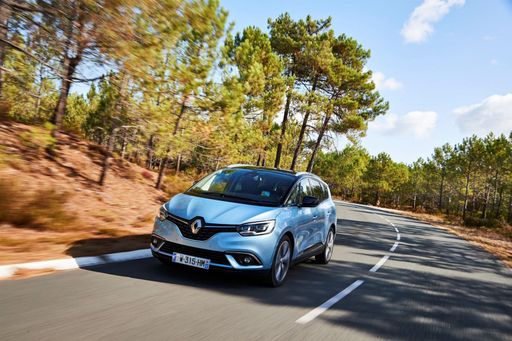
Renault Scénic
Renault Kangoo
The Renault Kangoo high-roof van delivers a practical and versatile solution for both family and commercial use, with its spacious interior and adaptable seating arrangements. Its modern design and user-friendly features provide comfort and convenience, making it an appealing option for those needing a reliable workhorse. Additionally, the efficient engine options ensure a balanced approach to performance, keeping running costs manageable for everyday driving.
details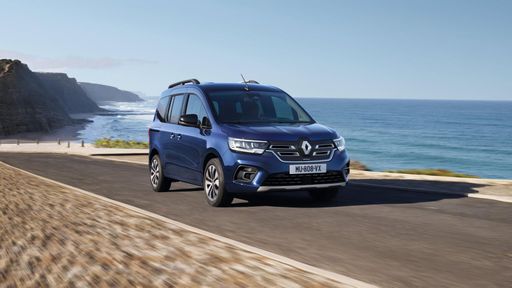 @ Renault
@ Renault
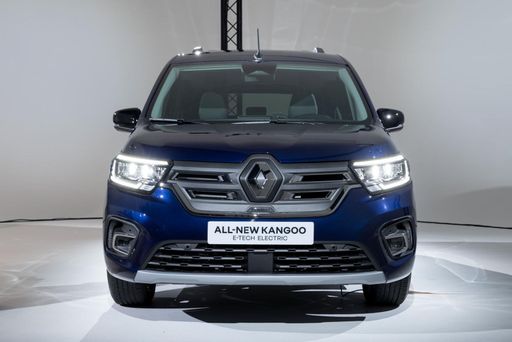 @ Renault
@ Renault
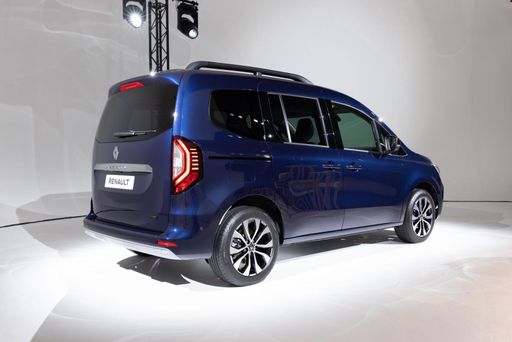 @ Renault
@ Renault
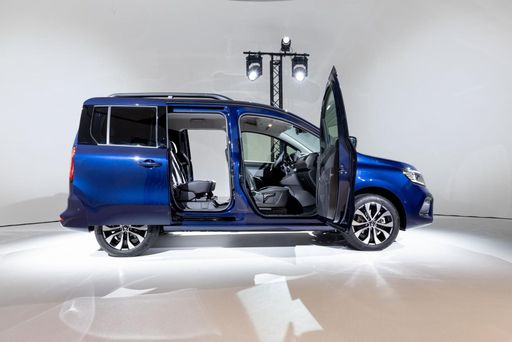 @ Renault
@ Renault
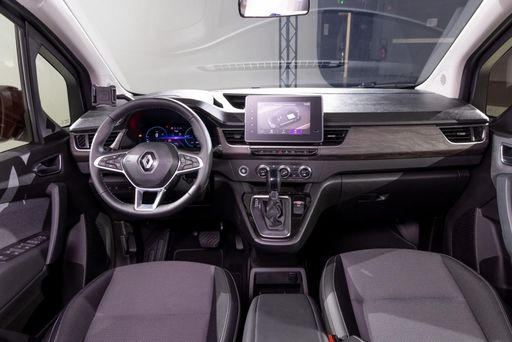 @ Renault
@ Renault
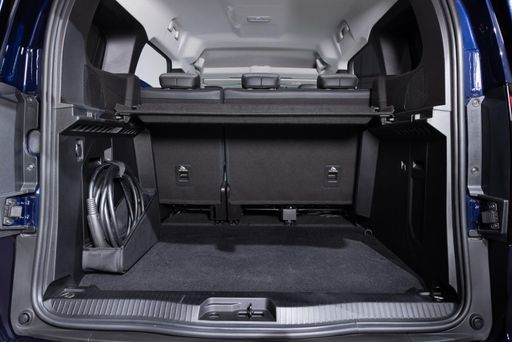 @ Renault
@ Renault
Renault Scénic
The Renault Scénic, with its distinctive design, captures attention through its sleek and modern aesthetic. Its interior is thoughtfully crafted, offering ample space and comfort for family travel or long journeys. The Scénic stands out with a strong emphasis on practicality, making it an ideal choice for those seeking both style and functionality in a vehicle.
details @ Renault
@ Renault
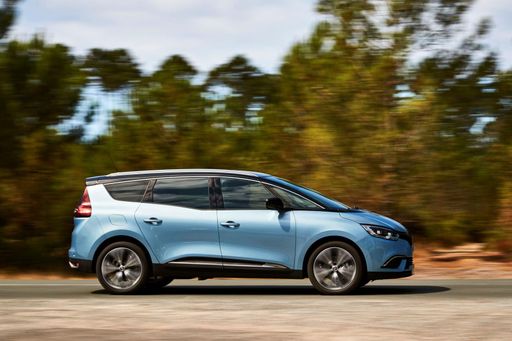 @ Renault
@ Renault
 @ Renault
@ Renault
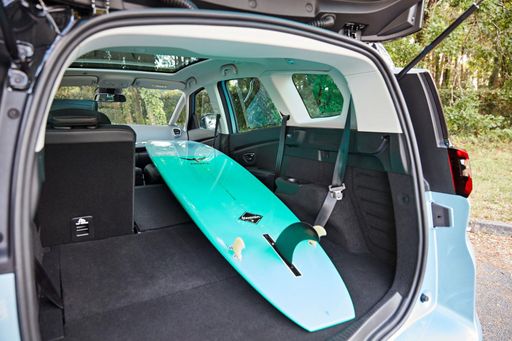 @ Renault
@ Renault
 @ Renault
@ Renault

|

|
|
|
|
Costs and Consumption |
|
|---|---|
|
Price
23100 - 36200 £
|
Price
34600 - 44000 £
|
|
Consumption L/100km
5.2 - 7.1 L
|
Consumption L/100km
-
|
|
Consumption kWh/100km
20.2 - 21.5 kWh
|
Consumption kWh/100km
16.6 - 17.5 kWh
|
|
Electric Range
278 - 285 km
|
Electric Range
420 - 598 km
|
|
Battery Capacity
-
|
Battery Capacity
-
|
|
co2
0 - 161 g/km
|
co2
0 g/km
|
|
Fuel tank capacity
54 L
|
Fuel tank capacity
-
|
Dimensions and Body |
|
|---|---|
|
Body Type
High Roof Estate
|
Body Type
SUV
|
|
Seats
5 - 7
|
Seats
5
|
|
Doors
5
|
Doors
5
|
|
Curb weight
1585 - 2041 kg
|
Curb weight
1822 - 1927 kg
|
|
Trunk capacity
500 - 950 L
|
Trunk capacity
545 L
|
|
Length
4486 - 4911 mm
|
Length
4470 mm
|
|
Width
1860 - 1919 mm
|
Width
1864 mm
|
|
Height
1838 - 1869 mm
|
Height
1571 mm
|
|
Max trunk capacity
1296 - 3050 L
|
Max trunk capacity
1670 L
|
|
Payload
400 - 609 kg
|
Payload
514 - 518 kg
|
Engine and Performance |
|
|---|---|
|
Engine Type
Diesel, Petrol, Electric
|
Engine Type
Electric
|
|
Transmission
Manuel, Automatic
|
Transmission
Automatic
|
|
Transmission Detail
Manual Gearbox, Dual-Clutch Automatic, Reduction Gearbox
|
Transmission Detail
Reduction Gearbox
|
|
Drive Type
Front-Wheel Drive
|
Drive Type
Front-Wheel Drive
|
|
Power HP
95 - 130 HP
|
Power HP
170 - 218 HP
|
|
Acceleration 0-100km/h
11.6 - 15.6 s
|
Acceleration 0-100km/h
7.9 - 8.6 s
|
|
Max Speed
130 - 184 km/h
|
Max Speed
150 - 170 km/h
|
|
Torque
200 - 270 Nm
|
Torque
280 - 300 Nm
|
|
Number of Cylinders
4
|
Number of Cylinders
-
|
|
Power kW
70 - 96 kW
|
Power kW
125 - 160 kW
|
|
Engine capacity
1332 - 1461 cm3
|
Engine capacity
-
|
General |
|
|---|---|
|
Model Year
2022 - 2024
|
Model Year
2025
|
|
CO2 Efficiency Class
E, F, D, A
|
CO2 Efficiency Class
A
|
|
Brand
Renault
|
Brand
Renault
|
Is the Renault Kangoo offered with different drivetrains?
Available configurations include Front-Wheel Drive.
The prices and data displayed are estimates based on German list prices and may vary by country. This information is not legally binding.
